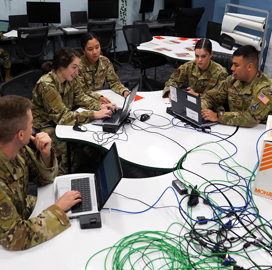A team from the U.S. Navy Reserve successfully resolved vulnerabilities within unclassified computer networks of the service branch during an annual U.S. Fleet Cyber Command operation.
This year’s Operation Cyber Dragon, which was held from March to August, demonstrates how Reserve Sailors could be useful in defending Navy assets, the command said Thursday.
The exercise, led by Chief Warrant Officer Scott Bryson, involved more than 100 reservists within and outside the command who were chosen regardless of technical knowledge in information technology.
“Whether it’s a commercial business, military or government, your attack surface varies all the time from malicious hackers that are trying to poke and prod you. We’re always going to have vulnerabilities,” Bryson said.
He noted the team identified and resolved nearly all gaps that exposed the systems from outside threats.





